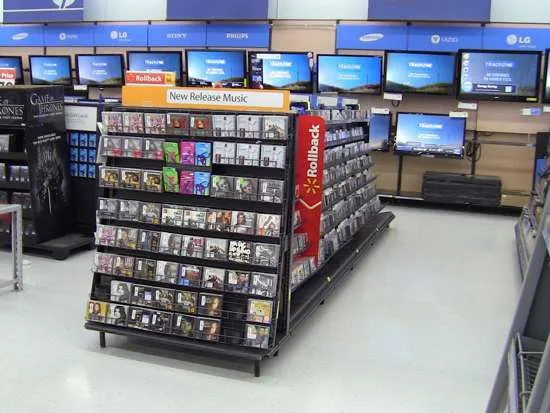The Downfall of Compact Discs
Written by Adam Pearson on April 18, 2022
It’s 2008 and you’re sitting in the back of your family’s SUV driving towards your next family vacation. You’re most likely listening to Hannah Montana, The Jonas Brothers, or The Black-Eyed Peas with Skullcandy headphones and a CD player. The song ends and you reach for your backpack full of snacks, coloring books, and your Tamagotchi that is so peacefully sleeping. Out comes the CD wallet with all your favorite albums packed into 32 thin, plastic sleeves protected by a thick nylon cover. After looking at all 32 sleeves – because you must pick the absolute best CD – you land on High School Musical. You press the eject button on the CD player, the lid pops up, you replace the disk, and now you have another hour of fresh music.
The compact disk, better known as a CD, lived the shortest life of all musical distribution formats. Spawning in 1982, surpassing cassette tape sales in 1991, and reaching peak sales in 2000, the CD appeared almost unstoppable. However, the CD was well on the path to becoming extinct within the next 50 years.

By the early 2000’s you could find a CD player just about anywhere. Major retailers including Walmart, Best Buy, and Circuit City were prime locations for buying a CD player. Every car manufactured included a space for CDs. Boomboxes introduced housings for CDs while ditching their outdated cassette counterparts. Then in 2004, annual CD sales would never rise again.
Launching in 2003, iTunes, a digital marketplace for music distributed through Apple Inc., introduced an entire new way to collect music, at a much cheaper price. Digital music allowed for a customer to buy an album, download it, and play it without ever having to touch a physical copy. All purchased were through online transactions using the customer’s credit card information. It wasn’t until 2008, after the launch of the original iPhone, physical sales would soon meet their demise.

iTunes, YouTube, Amazon, and Pandora soared in the new age of digital music. Public radio was quickly declining as businesses were turning to online radio formats to break a profit. Then, in 2011, the music industry was introduced to the same formatting used today, streaming. Spotify launched in the U.S. for the first-time allowing users to stream music without purchasing a copy. Originally, users were required to listen to advertisements, but did not have to pay subscription fees. By 2012, subscriptions were on the rise, adding millions of new subscriptions annually. In just one decade Spotify went from a startup company based out of Sweden, to a public trading company worth 26.5 billion USD.
In the subsequent years, major companies released their own versions of music streaming. Apple Music released in 2015 followed by YouTube Music in 2016. Even artists wanted a taste of the business, prompting the release of Tidal, notably owned by Jay-Z. Other artists with stakes in Tidal include Beyonce, Nicki Minaj, Madonna, Rihanna, and Alicia Keys.

Recognize the convenience we are granted being able to hit shuffle, read lyrics in real time, and create a playlist without physically having to make a mixtape. We live in a digital age progressing every day, we never know how soon music will take its next format.






